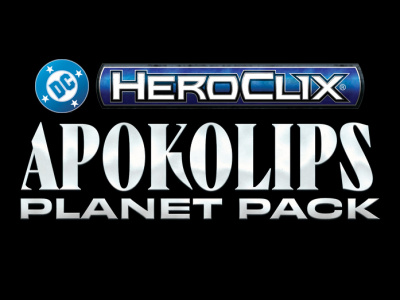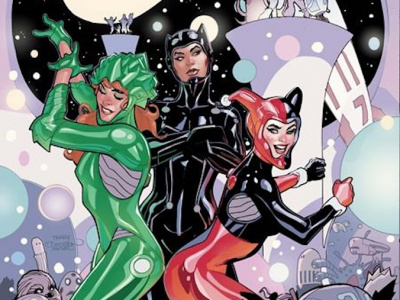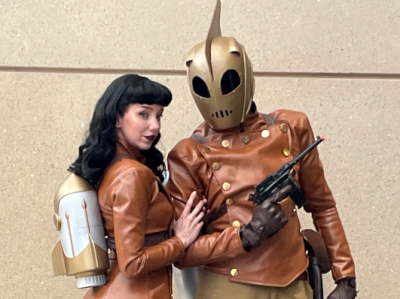
ICv2 caught up with Nick Barrucci, founder and CEO of Dynamite Entertainment and sister company Dynamic Forces to talk about the state of the market and Dynamite’s place in it. In Part 2, Barrucci discusses digital trends and the trends in comic collectibles. In Part 3, Barrucci talks about Dynamite’s editorial plans for 2011. And in Part 1, Barrucci talked about the state of the market in both comic stores and bookstores and Dynamite’s top categories.
Let’s talk about digital. You alluded to piracy as a factor in devaluing content, what about legal digital? What are you doing with digital content for Dynamite properties and where do you see that going?
Digital is still an early market. We became aggressive once DC got into the market with comiXology and once Marvel came into the market (as opposed to just being able to read the digital comics on the Marvel site), they created the market share that made this a much more viable business. Before then you had much more select hits here and there, like Star Trek when the Star Trek movie came out (the prelude to the last Star Trek movie did really well, as downloads both as singles and collections). But outside of a hit here and a hit there it was too small of a market for us to concern ourselves with. I see it growing, that much I can tell you.
How big will it become? I don’t know. We’re not movies, we’re not music, we’re not TV. With music you just pop on your plugs, you listen to it, you don’t have to do anything. With movies or TV you’re watching it move; with comics, you actually have to move it. I think that there’s an audience, probably under 20, that will be reading more and more comics on their handheld devices, and I think we’ll see that become a real business model maybe in five or seven years. Right now the majority of our market is still holding it in their hands.
But for Dynamite, we’ve been negotiating agreements with, as far as we can tell, every major company that is currently creating downloadable digital comics. We’re working with comiXology, we’re working with Graphic.ly, we’re working with iVerse. We’re in discussions with other companies that are popping up.
There’s a quote [by] Mark Millar where he said, with Kick-Ass and The Ultimates and all the royalties he made last year from digital, he made more money writing one issue of Superman Adventures ten years ago. So that should give people a feel for where the market is at considering that Mark Millar has some of the bestselling titles in comics. That includes creator owned where he gets a bigger piece of digital and had a huge audience of people who went to see the Kick-Ass movie that bought the comics.
You think legal digital content is a plus or minus for the print market?
It has to be a plus. If there is a new fan base to get, it allows them to read the comic on their handheld and it gives us a chance to acquire new readers that we wouldn’t have otherwise. Right now there’s no national ad spendfor comics. There’s a good chance that there never will be. The only thing that promotes comics is word of mouth and retailers and consumers trying to get their friends involved. Digital has to be a way that we can grow that market.
We’ve known you from before your Dynamite days with Dynamic Forces, which is still around. Can you tell us what’s going on at Dynamic Forces?
The business has changed. We’re still creating autographed limited editions, trading cards, statues, lithographs, fine art. What has changed is that we’re not creating as many of the high end statues or as many of the high end giclees. We’re not selling as many statues over $200, with very few exceptions; we’re not selling many fine art pieces over $300--the canvas giclees framed, or the paper giclees framed. So the business has adapted to the economy, and I think it makes sense.
If I’m a fan and I used to spend more than $100 a month and I’m down to $100, I’m not going to spend $100 on a statue when I can spend $100 on 25 to 30 comics. I’m a comic fan first. So we’ve lost that audience. We’ve also lost it because, similar to how we were talking before about there being too many comics, and too high a price point, there were too many manufacturers creating resins and statues, selling to the same amount of consumers. Eventually consumers have enough 8”, 12” statues, 4” busts. There’s only so much you can grow that market and there were too many manufacturers.
I think every single one of these manufacturers, except for Sideshow, has trimmed down their line. I think Sideshow has done such a great job of keeping their audience and giving them a certain steady line of cool collectibles that they’ve been able to maintain their business and they haven’t had to slim it down like everybody else. The one good thing about Dynamic Forces is that we also continue to do TV shopping channel shows. To a degree, I’d like to think that everything we do there does expose comics to a new audience. The reality is that we do expose comics to a new audience. We’re exposing it to parents buying it for their kids. And while we’re promoting the limited edition signed collectible as something cool, as something to introduce a new audience into the comics market, we make sure that during a presentation we always bring up the comics market and encourage those parents to bring their kids to a local comic store.
What we try to do is promote the fact that if you’re buying your first comic here and you’re bringing it to your child and they’re going to read it, if you enjoy it, check out more comics at your local comics store. And that’s our way of trying to expand the market with Dynamic Forces.
You talked about the collectible aspects of the Dynamic Forces line. In Dynamite also, there are things that you do that focuses on that market--the multiple covers, the incentive books. Has the market for those kinds of collectibles changed over the last couple of years and what do you see as the current trends?
I’ll answer one way for Dynamic Forces and one for Dynamite Entertainment. On the Dynamic Forces front, it’s slowed down dramatically. Just like with the statues and the high end lithographs, if a consumer can spend $10-20 and buy three to seven comics, or he can buy one limited edition $10-20 comic, he’s going to spend the money on the regular comics. We’re fortunate that we do have consumers, fans that love DF, who still buy quite a few of the collectibles that we release which is why that’s still in business. We do a really good job of presenting the collectibles, of creating material (basically cool covers that are collectible limited editions that the consumers really want), but it’s been halved in the last 10 years and there’s no other way to say that. It’s literally been halved.
As far as the incentive covers for Dynamite Entertainment, they don’t work as well as they used to at all. I truly think that the biggest reason that publishers are still doing variant covers isn’t because they work, but it’s the fear of what would happen if they didn’t do that. I know that’s one of the reasons why we still do them. We still do them because if a book sells 20,000 with variants, we’re concerned that it might only sell 17,000 without them.
There are too many out there. I mean think about it. Without naming names, I can go down the Diamond order form and show you publishers that have 75% of their line as variants, whether it’s a one in four variant, a one in 10 variant, a retailer incentive variant. Who could even pay attention or collect all of these? And trust me, we’re as guilty as anybody else. It’s not like I’m sitting here pointing and saying, “oh, but not us.” We’re doing it as well.
Hopefully we can become a market that doesn’t count on these gimmicks any more.
Do you think the collectible side of the comics business is in faster decline than the overall market?
If I’m going to look at our sales and our two businesses, I think the collectible side of the comics market had an increased decline that started four years ago. And then when the recession hit, about two years ago when it really started hitting and not when the government said it hit, that’s when we saw the biggest crash.
Believe or not the collectibles side of the business has been steady for us in the last year and a half and we’ve seen some months with improvements, but it’s been halved regardless. If we’re going back the last eight years, it’s been halved.
So smaller, but stable.
Exactly. Smaller but stable. That’s a good way of putting it. It’s a sustainable business.
The question is, is the collecting side of being a comics fan less important than it used to be and is that a continuing trend? You’re seeing certain types of products that are selling differently than they did in the past. There are differential rates of change for a basic comic that doesn’t have a variant cover and the variant covers and other aspects of the collectibles business.
I wish I had the answer. If you look at all the releases that are coming out from every publisher, you’re looking at almost all titles every month having the same diminishing returns. There are three ways to increase sales if you’re a publisher: a new #1, a new creative team, or a new #1 with a new creative team. Across the line over the last few years, all titles have dropped--outside of there being too many titles (Green Hornet) from a publisher, all titles seem to have the same amount of diminishing returns, with the exception when a Marvel or DC are able to relaunch their titles with new #1s and create interest from the consumers and retailers.
If you look at what Marvel did last year with The Avengers where they relaunched them with one Avengers title with Brian Michael Bendis and John Romita Jr., the other Avengers titles with Brian [Bendis] and Stuart Immonen, and then you had The Secret Avengers with Ed Brubaker and Mike Deodado, they were able to stimulate a lot of interest from retailers and consumers. And if memory serves, one of those titles sold over 160,000 copies and was the bestselling title last year.
But that had great creators; it had the most popular titles in the industry; and it had a lot of gimmicks to get there. I guess it depends on whether fans and retailers want to buy into the gimmick--whether or not it works. But the quality in the product had to be there, too. They couldn’t have done it without the quality of team put on it.
Click here for Part 3.
Click here for Part 3.







